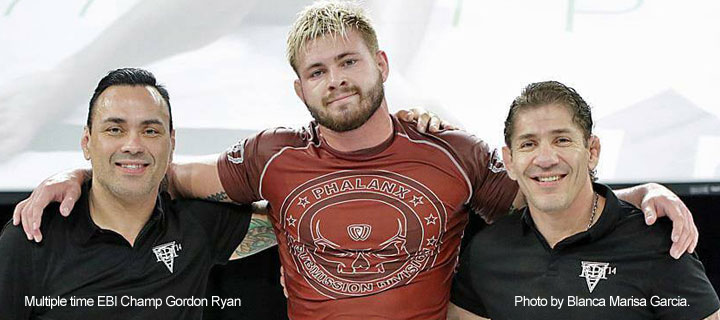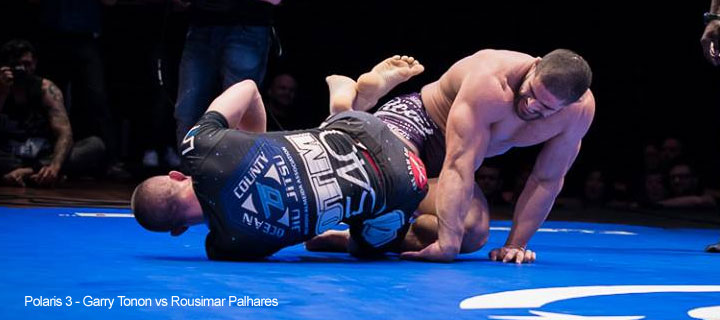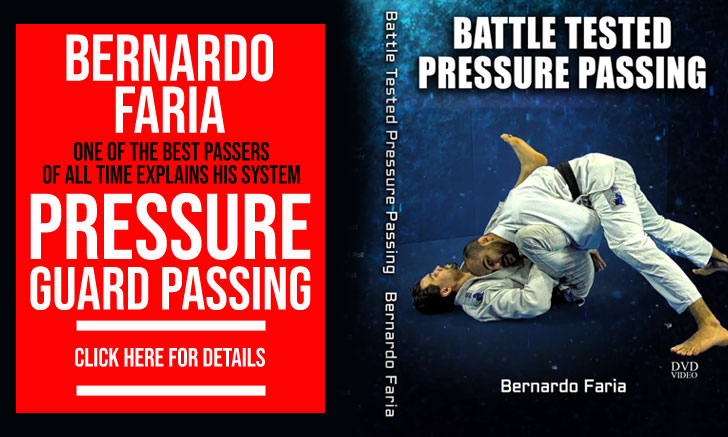The popularity of the Submission-Only movement has been rapidly growing in grappling culture, particularly since its introduction to a mainstream audience by Metamoris back in 2012, after years of taking a back seat to the IBJJF and ADCC rules based tournaments.
After the debut of the now semi defunct Metamoris many promotions came forward and presented their own versions of Sub-Only with great success, be it the Polaris Invitational (event scheduled for next weekend), EBI or Fight To Win. This style of competition gathered a unique fan base combining no-gi enthusiasts and plenty of mixed martial arts (MMA) fans – given the strong support shown to EBI by the Ultimate Fighting Championship and the world famous MMA commentator Joe Rogan through his podcast.
Having Jiu Jitsu shows based solely on submissions is not a recent theme. Prior to Metamoris Rose Gracie already ran Gracie Tournaments in California, and had done for a few years. Right at the very inception of Jiu Jitsu in Brazil there was also no point structure and matches were decided by submission, failing that the result would be a draw. It is worth referencing that during those early beginnings Jiu Jitsu was very much a raw version of the Judo taught by the Kodokan Institute, and not the system it developed into today.
During the late 1960’s Helio Gracie joined forces with other important figures of Jiu Jitsu’s Rio de Janeiro scene to decide upon a point system that would redefine the sport we know and love. That point system was built on a series of positional grappling controls based on what a grappler should be looking for in a “real fight” (take-down/sweep, pass, take the back/mount and then submit). There were obvious shortcuts to victory, which continue to be developed to this day, but the crux of the plan designed by the martial art’s masters was clear – positional control as a path to victory.
In adding this point system Jiu Jitsu suffered a transformation, the purists would say it derailed from its ancestral essence, the younger generations that it improved on an archaic style of combat. Regardless of who is right or wrong, BJJ became a positional dominance based martial art system (position over submission) with other grappling styles spending more time developing submission chains such as catch-wrestling or wajutsu keishukai.
And here lies our question:
IF ONE REMOVES THE POSITIONAL CONTROL ELEMENT THAT IS THE FOUNDATION OF BJJ AS A SYSTEM, SHOULD WE STILL CALL IT JIU JITSU?
The recent match between AJ Agazarm (Gracie Barra) and Chai Sirisute (10th Planet) at Fight To Win 61 Pro was a clear example of how not to judge a match in Jiu Jitsu terms. Agazarm was in full control throughout the 8 minute bout taking Chai down, passing the guard, knee riding and mounting repeatedly. Textbook Jiu Jitsu performance through and through which in IBJJF terms would earn him a victory of at least a 28 point lead. Clean cut decision? Not at all, instead the victory did came by 2×1 referee split decision with the head referee of the promotion awarding the victory to Chai (mentioning he was following the rules as he had the clearer submission attempt – a loose guillotine).
This wasn’t a one off occurrence, as the pro organization’s decisions are based heavily on submission attempts the lack of positional incentive changes the dynamics of the game drastically, a clear example of this is seen in our study of the different rulesets in Submission Grappling. These different dynamics are then trickled down to to the classroom where (if the gym focuses on SO) the positional hierarchy becomes obsolete. Once you follow that rabbit hole you find a different system and very different approach to the grappling puzzle.

One of the most talked about enhancements to the game brought forward by the Sub-Only movement was in the heel hook department, which spawned from the performances of Eddie Cummings, Garry Tonon and Gordon Ryan – the Danaher Death Squad boys on EBI.
An interesting side fact in this heel-hooking system developed by John Danaher for his pupils is that it was developed by abiding to the same principles of BJJ (position before submission), just applied to the bottom half of the body. This much was explained by the Renzo Gracie Academy head coach at the JRE Podcast (January 11, 2018).
Although DDS leg-locking prowess is a good example of a well planned and structured improvement to the BJJ system, we seemingly see less relevance given to guard retention or top control in the vast majority of these sub only matches which further reiterates our point.
POLARIS, THE EXCEPTION TO THE RULE
 Aside from having brought us arguably the best grappling match of all time, in terms of SO the only major promotion to still promote a positional hierarchy is the Polaris Invitational where – if no submission is achieved, a decision is rendered based on who controlled the tempo of the match. Using this method Polaris places itself in between the points system and the old school submission only matches. Polaris also provides more time for athletes to work for the submission (15 mins).
Aside from having brought us arguably the best grappling match of all time, in terms of SO the only major promotion to still promote a positional hierarchy is the Polaris Invitational where – if no submission is achieved, a decision is rendered based on who controlled the tempo of the match. Using this method Polaris places itself in between the points system and the old school submission only matches. Polaris also provides more time for athletes to work for the submission (15 mins).
THE END RESULT
There is definitely a strong case against Sub-Only being a Jiu Jitsu format – exception made to the aforementioned rules followed by Polaris. The idea that positional dominance has no place in BJJ goes against the concept of the martial art itself, where the theory that the smaller athlete can beat a bigger opponent is held following these same Jiu Jitsu principals. According to those the smaller athlete’s chances of winning against the larger opponent will be severely compromised if his positional control is not up to standard (i.e. getting his guard easily passed) regardless of how many submission tricks he has stored inside his rash-guard sleeve.
Although these events break from of our BJJ mold, they should not be dismissed. Jiu Jitsu is a wide open universe where new ideas are encouraged and tested. No one can deny that Sub-Only has brought a breath of fresh air to the No-Gi facet of the game, one often relegated to that ADCC tournament every couple of years. New positions have spawned from these events, new stars and more eyes on Jiu Jitsu athletes, which makes another very compelling argument for Sub Only in BJJ.
Like every other sport athletes tend to specialize in a specific element of the game and in the long run it will be inevitable to see more Sub-Only schools breaking loose from the Jiu Jitsu system. Some already do, marketing themselves that way by downplaying BJJ’s standard, claiming to be a – insert: ‘revolution’, ‘evolution’, ‘upgrade’ or any other shade throwing adjective of the martial art when in fact they are taking a step back from Jiu Jitsu, or branching out towards Catch-as-Catch-Can.
Should Submission Only still be called BJJ? Does it Matter? Discuss.
Cover photo by Blanca Marisa Garcia.















